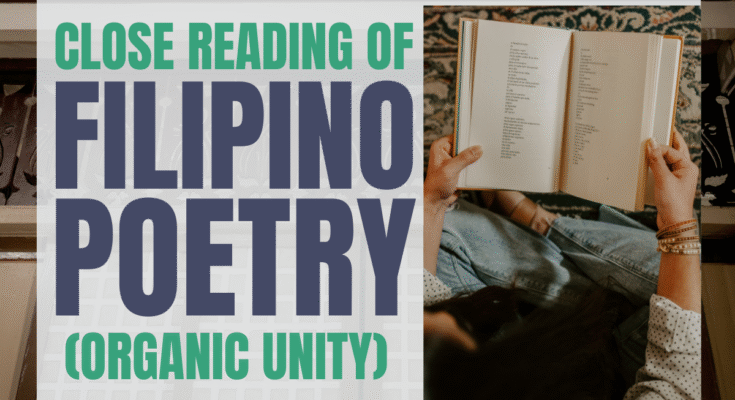What is organic unity in literature, and why is a close reading of Filipino poetry important?
Poetry is a powerful art form that can evoke images and emotions, perhaps from something as simple as a line of ten or twelve words. However, to understand it, we often need a technique to uncover the layers of meaning and complexity behind the words. That’s where close reading comes in, but first, we need to understand organic unity.
What is organic unity?
The organic unity of a poem is its unified whole or the way all of its parts and aspects come together to create a cohesive unit.
This principle was established by the New Criticism school of thought, which says that all the interdependent parts of a literary selection must add up to create one whole. In literature, all the parts and aspects of a literary selection must contribute to one whole so crucially that if one part or aspect went missing, the literary selection cannot be complete or may not have the same meaning anymore.
To understand the organic unity of a poem, you must use the process of close reading.
What is close reading?
Close reading is a way for you to analyze a text (or a poem) by carefully reading and rereading it until you have found its interpretation.
It is an interpretive strategy for attending to the details of a particular literary text and focuses on clarifying the text’s meaning and relevance. Close reading is unusual in that it directs a reader’s focus towards aspects of a text that are typically ignored, such as specific words or images, grammar, syntax, and punctuation. The goal of close reading is to gain greater insight into the subject matter contained within a text; it often forces readers to consider the role and purpose of every detail contained within a work.
When you close read a poem, what must you look for?
When you close read a poem, you must look for context. When was the poem written? Where was it written? Why was it written? You can answer these questions by looking at the poet’s biography, which will give you an idea of what they were going through when they wrote the poem.
You can also look at interdependent elements to gain insight into what the poet is trying to say. Interdependent elements include diction (word choice), syntax (sentence structure), and imagery (colors, smells). The way these elements interact with one another can help you determine whether or not your interpretation of the poem is correct.
Finally, you should consider persona in order to understand who is speaking and how they feel about what is being said in the poem.
What is the importance of close reading in Filipino poetry?
Close reading allows us to understand the nuances of the language and how it is used as a tool for creating meaning. This is particularly important for poetry, as it uses language as a means to convey emotion and thought in a way that can be difficult to translate into another language. Close reading allows us to see how each word is used and how that use contributes to the overall impact of the poem.
Filipino poetry is written in Tagalog, English, and other dialects. The words used in Filipino poetry can have different meanings depending on the context they are used in. In order to understand the meaning of these words and the poem as a whole, it is important to read them carefully. Close reading allows us to focus on every single word and phrase written by the author so that we can discover their hidden meanings.
Reference: DIWA Senior High School Series: 21st Century Literature from the Philippines and the World
This was originally published on my previous website at Teacher Anele <iamteacheranele.wordpress.com>
If you’re looking for more resources about literature, then make sure to browse my website.




